Can Botox Raise Your Eyebrows?
Botox can raise your eyebrows by injecting Botox in the muscles that pull the brow don, these are the frown lines muscles and a small muscle at the upside part of the brow.
Then the forehead muscle which pulls the brow up takes over and elevates the brow. (Samir Shureih, MD, Baltimore Plastic Surgeon)
Used incorrectly Botox create sagging and funny expressions. Used correctly it does not.
A Botox brow lift smooths the forehead and lifts the brow using Botox injections. The frontalis muscle raises your forehead, making cross lines.
The corrugator muscle complex brings your brow down, making vertical frown lines between the brows.
The orbicularis oculi muscle under the outer brow brings down the outer brow.
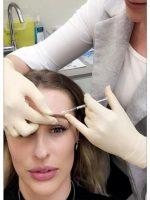
Botox Brow Lift – Where Do You Inject
Done correctly, Botox balances the pull from these muscles so that the brow skin is smooth, lines are softened or gone, the brow in a normal position and the outer brow lifted. (Elizabeth Morgan, MD, PhD, Atlanta Plastic Surgeon)
Botox Brow Lift
This is also known as a chemical browlift. Your eyebrow position is determined by the balance of the eyebrow lifting muscles and the eyebrow lowering muscles – like a see-saw.
Botox can be used to weaken the eyebrow lowering muscles to assist the eyebrow lifting muscles and raise the eyebrow.
It is very effective, subtle, and an easy way to lift the brow and soften the eyebrow/eyelid area at the same time. Unfortunately, it lasts 3-4 months but is easy to do again. (Gregory J. Vipond, MD, FRCSC, Inland Empire Facial Plastic Surgeon)
Botox can be used to raise the eyebrows
The position of the brows is largely determined by two factors. The first factor is the natural downward settling that occurs with the aging process.
The second is the balance between the muscles that pull the brow downward and those that lift the brow.
There are two main muscle groups that pull the brow downward. One cluster of muscles is in the space between the eyebrows just above the nose. If you look in the mirror when you activate these “frown” muscles you will typically see two things.
Vertical creases will develop between the brows and the inner aspect of the brows will be pulled downward. The second group of muscles is in the “crow’s feet” area around the corner of the eyes.
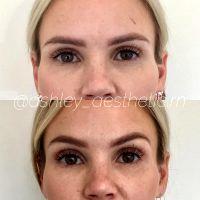
Botox Brow Lift Can Improve The Position And Shape Of The Eyebrow
If you pretend to squint as if you are looking toward the sun you will see that the corners of the eyes scrunch up and the outer brows tend to come downward. The main brow elevators, the frontalis muscles, exist above the brows. They are broad, thin muscles and when they contract the entire brow is lifted. With the passage of time this activity will produce horizontal creases across the forehead. The key to raising the brow with botox is to judiciously weaken the aactivity of the brow depressor muscles while keeping the tone of the brow elevators intact.
It must be done with great attention to detail as there are subtle activities with each muscle group that vary from person to person. In general the botox lift works reasonably well with milder degrees of brow descent, but when a brow has come down to a great degree surgical lifting will be much more effective. (John Q. Cook, MD, Chicago Plastic Surgeon)
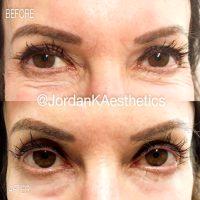
Botox Raises Our Eyebrows
Botox and surgical brow lift each have their place
The action of Botox can raise the brows and achieve improvement in the appearance of the aging face. It is not, however, an equivalent to surgical elevation of the brows. I believe that both have their place in the armamentarium of the plastic surgeon.
For mild cases of brow ptosis or if there are contraindications to surgery, either financial or medical, Botox can offer a low-cost, short-term improvement. In instances of significant ptosis of the brows, it will not be as effective.
I would commonly recommend Botox for early brow ptosis or as a first step so patients can individually evaluate its efficacy and then decide how to proceed over time. (Robert L. Kraft, MD, FACS, New York Plastic Surgeon)
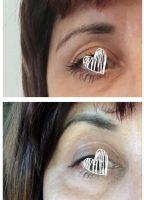
Botox Works By Relaxing Specific Muscles Around The Eye Area
Botox injected into a forehead can actually cause the brow to droop. But if it is used to selectively treat the depressor muscles of the forehead, it may actually cause the brows to lift. (Lawrence Kass, MD, Saint Petersburg Oculoplastic Surgeon)
Botox brow lift – how does it work?
Think of the brow as being “in the middle” of a tug-of war. On one side, are the muscles of the forehead that lift up the brow. On the other are the muscles (around the eye) that pull the brow downward.
If you Botox the muscles that pull the brow downward, the other team “wins”, and the brow moves upward. Clinically, we put a small dose of botox just beneath the lateral part of the brow – and voila – up it goes.
Of course, you can’t treat the adjacent forehead at the same time, or else this won’t work! (Thomas Fiala, MD, Orlando Plastic Surgeon)
What is a “Botox Lift” or “Botox Brow Lift”?
Botox paralyzes muscles. Therefore if you are able to paralyze the group of muscles that cause eyebrow depression, you can achieve a brow lift. If you also paralyze the muscles that lift the eyebrow, it may not work.
There is a fine balance between the muscles that lift the eyebrow and depress the eyebrow. (Sam Goldberger, MD, Beverly Hills Oculoplastic Surgeon)
This is when botox is injected into the orbicularis muscle in the brow. That muscle is used to depress the brow or lower it. Paralyzing it does the opposite or lifts it! The lift for a botox brow lift is not as much as a surgical browlift but some people love it. (Chris Thiagarajah, MD, Denver Oculoplastic Surgeon)

The Nonsurgical Brow-Lift
Botox works for brow lift.
1) The position of your brows is determined by a muscle balance. One muscle pulls the brows up and other muscles pull the brows down.
2) If Botox is used to relax the downward pulling muscles, then the upward pulling muscle is unopposed, works more effectively, and you get a brow lift. (George J. Beraka, MD (retired), Manhattan Plastic Surgeon)
Botox lift or Botox Brow Lift
Nearly all the muscles in our body are arranged in 2 opposing groups. Muscles that FLEX fighting muscles that EXTEND. In the face, muscles that LIFT are opposed by muscles that depress. Two important structures of the face can be lifted : the Brows and the corners of the mouth.
BROWS – the brow is pulled down centrally by the pull of the corrugator muscles and laterally by the orbicularis muscle. Placing Botox in these muscle areas allows the brow lifting muscle, FRONTALIS, to work unopposed and the brows lift (a nonsurgical lift)
CORNERS OF MOUTH – are usually pulled down by the Depressor Anguli Oris muscle while they are lifted by many of the smiling muscle (Zygomaticus major and minor muscles as well as others).
Botox brow lift is very effective
Botox works by chemically paralyzing muscle groups. If your doctor wants certain portions of the face to be positioned in a certain direction, he or she can use Botox to paralyze the muscle groups with cause the face to move in the opposite direction.
So, in the case of the brows, Botox can be used to perform a brow lift by targeting the depressor muscles of the brow. Along the inner portion of the brow, this is the corrugator, depressor supercilii and procerus muscles, which also are responsible for causing deep furrows.
Along the outer portion of the brow, it’s the tail of the orbicularis oculii muscle. Make sure you see an experienced Botox injector with in-depth knowledge of facial and brow anatomy. (Sam Jejurikar, MD, Dallas Plastic Surgeon)
Botox Lift: Injecting the tail of the brow
I believe that the Botox brow lift you are referring to is a tail of the brow injection. The mechanism which allows this to happen is via chemical relaxation of a muscle that functions to pull the brow down (the superolateral orbicularis oculi).
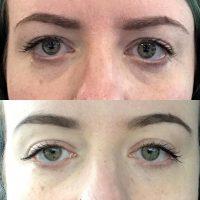
The Botox Brow Lift Explained
This functions to spring the brow upward, lifting the lateral brow. In addition, use of Botox in the glabella region (the 11’s) causes perceptible widening of the space between the brows, producing the illusion of a lift and a more relaxed look to the brow complex. (Stephen Prendiville, MD, Fort Myers Facial Plastic Surgeon)
Botox lift can correct droopy eyebrows
Droopy eyebrows can sometimes be improved by the administration of Botox Cosmetic into antagonistic muscles such as the lateral orbicularis oculi. This produces a slight elevation in eyebrow position. (Raffy Karamanoukian, MD, FACS, Los Angeles Plastic Surgeon)
Weakening the depressors makes the lifting job much easier and down turned lip corners are lifted. (Peter A. Aldea, MD, Memphis Plastic Surgeon)
